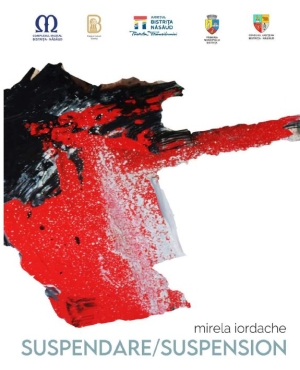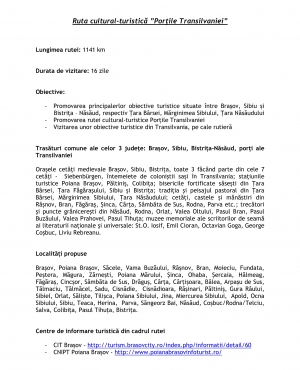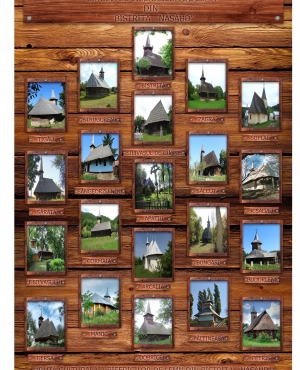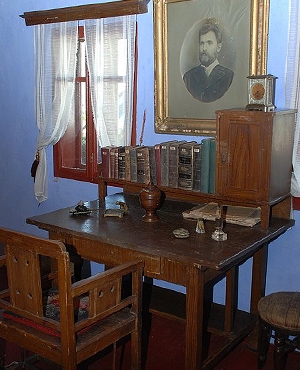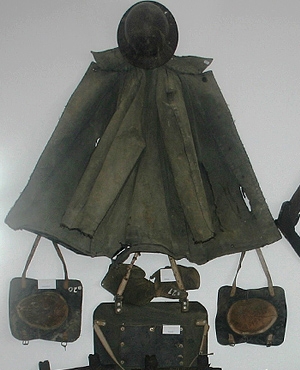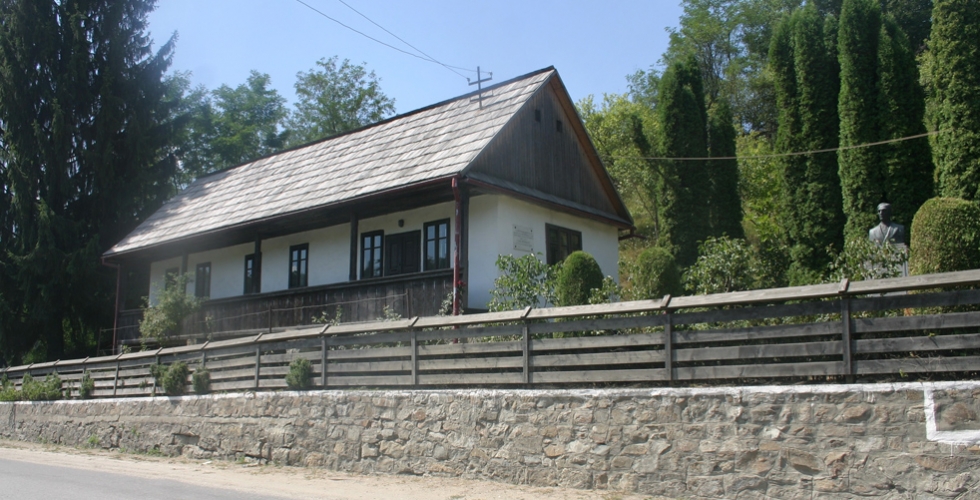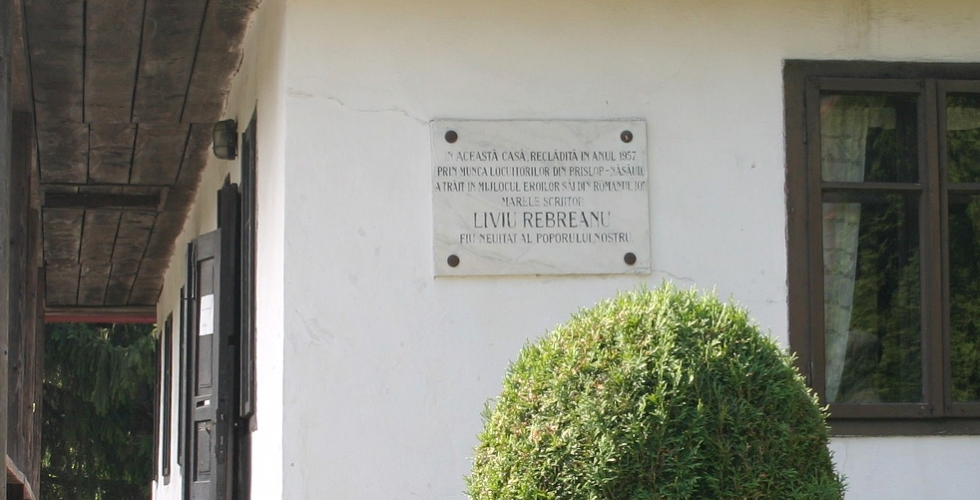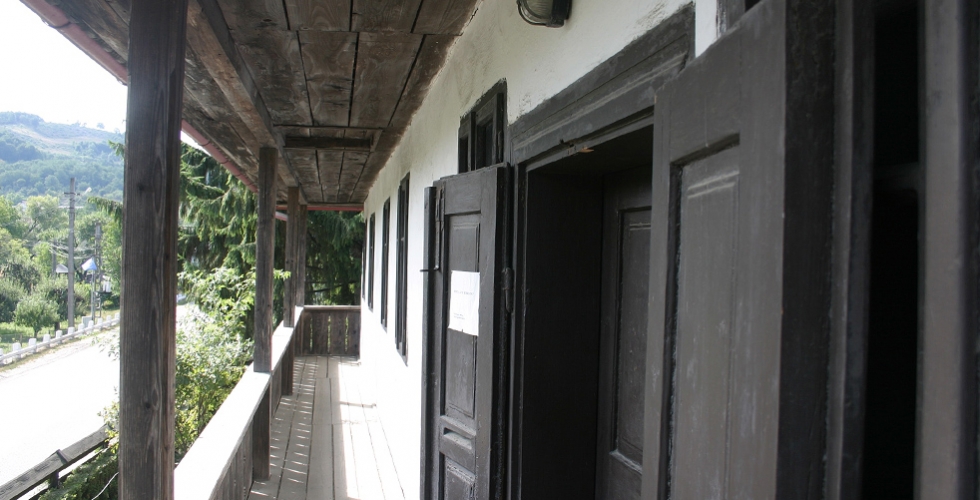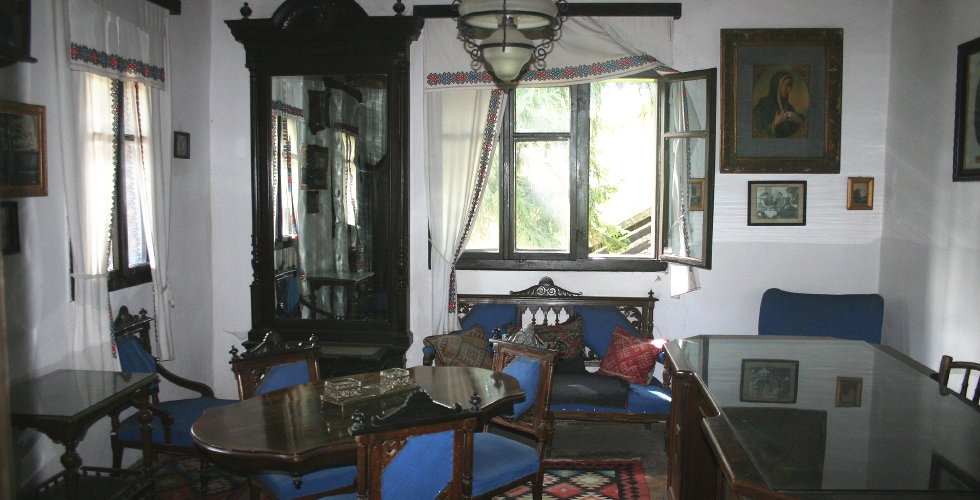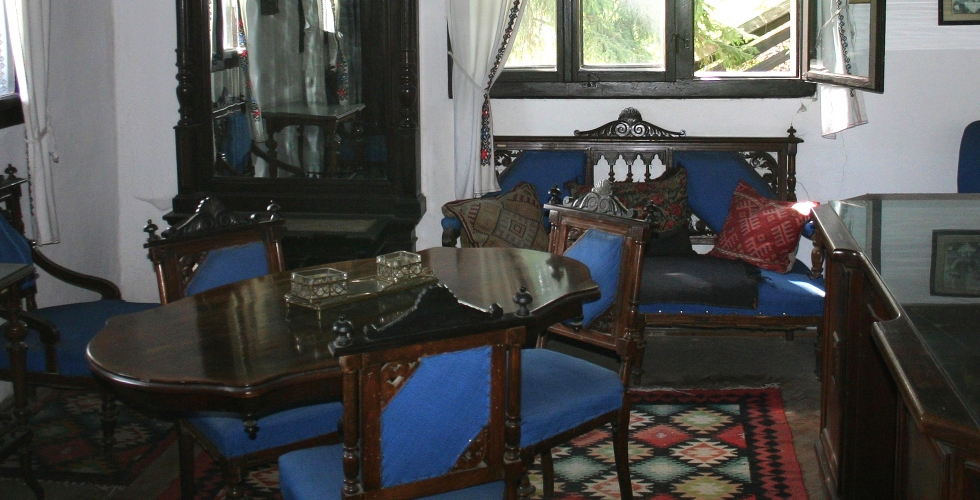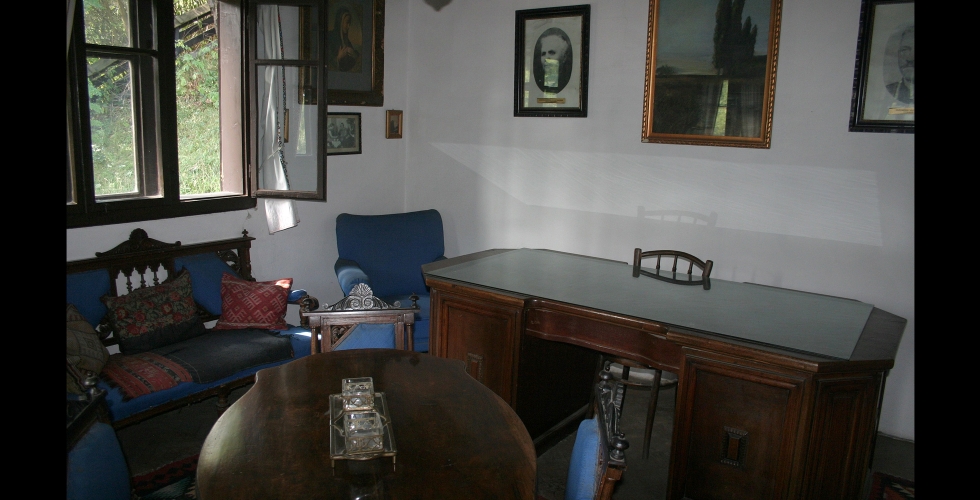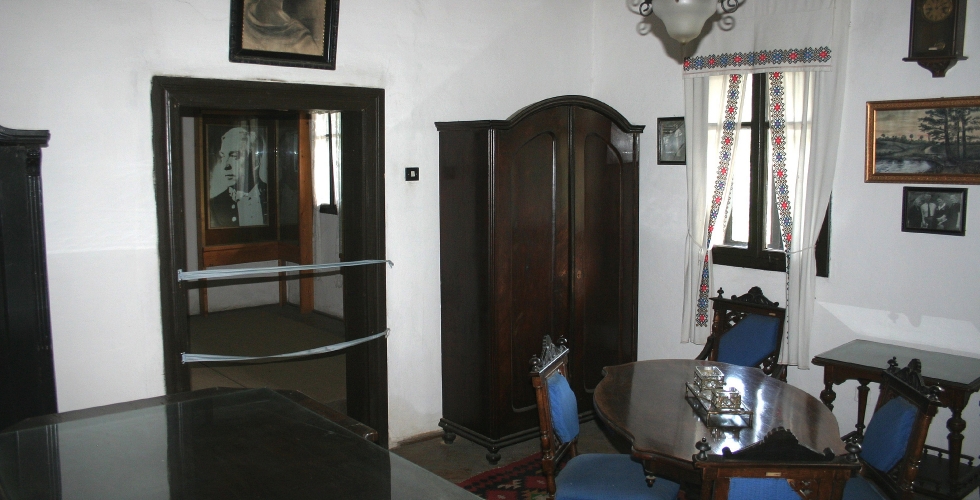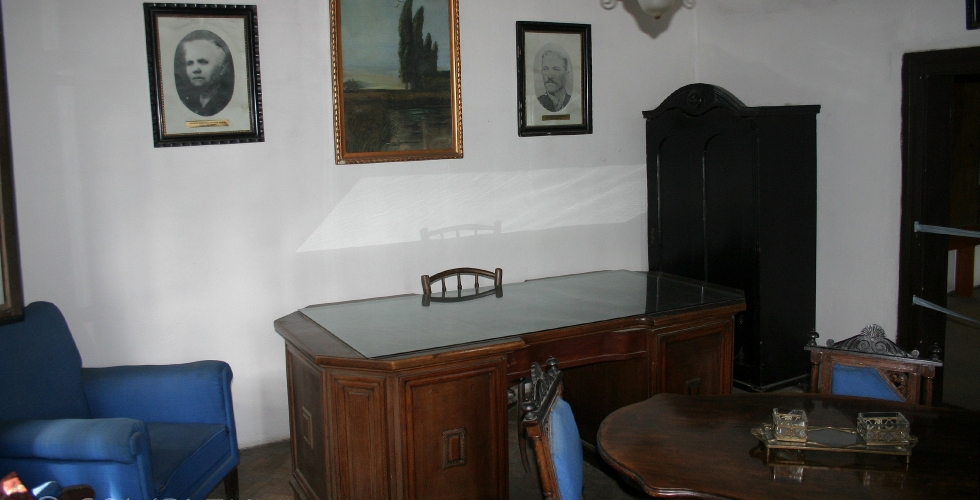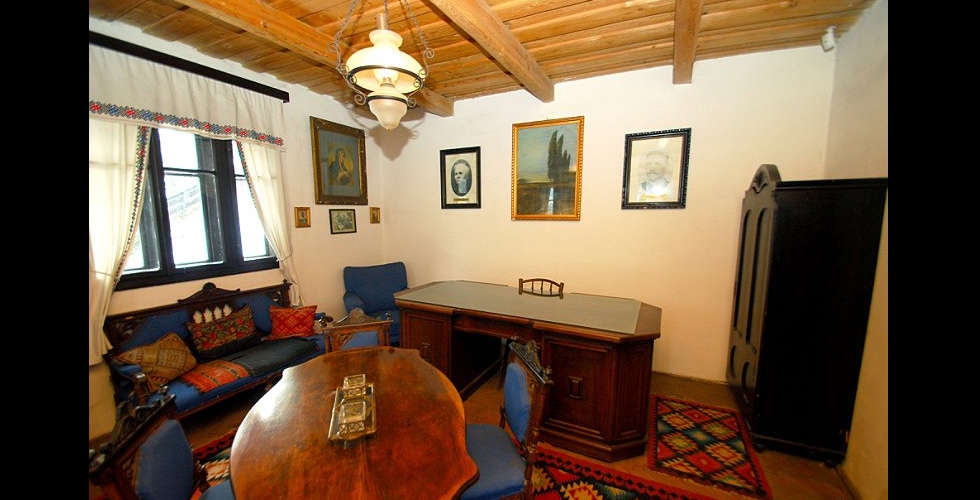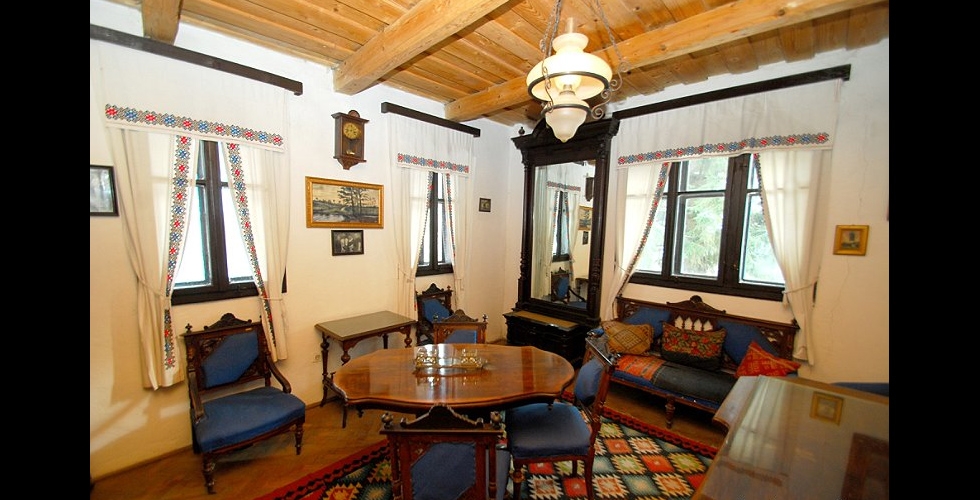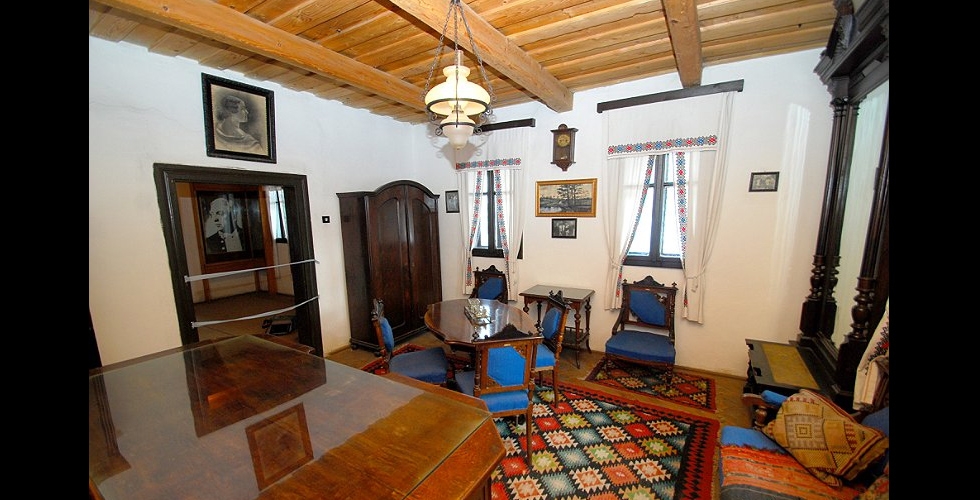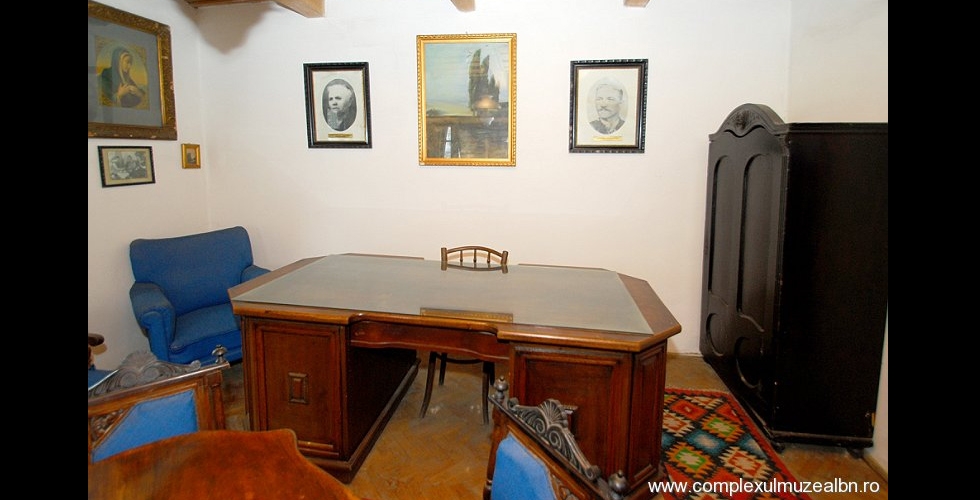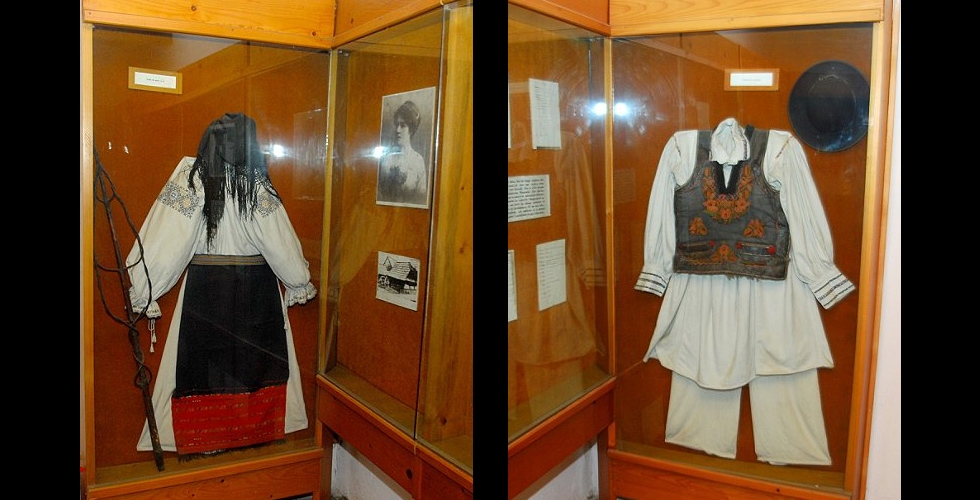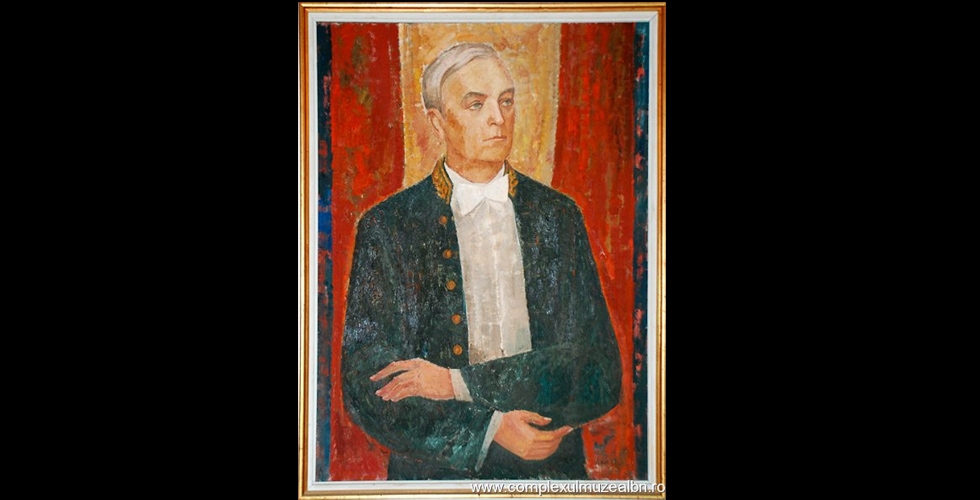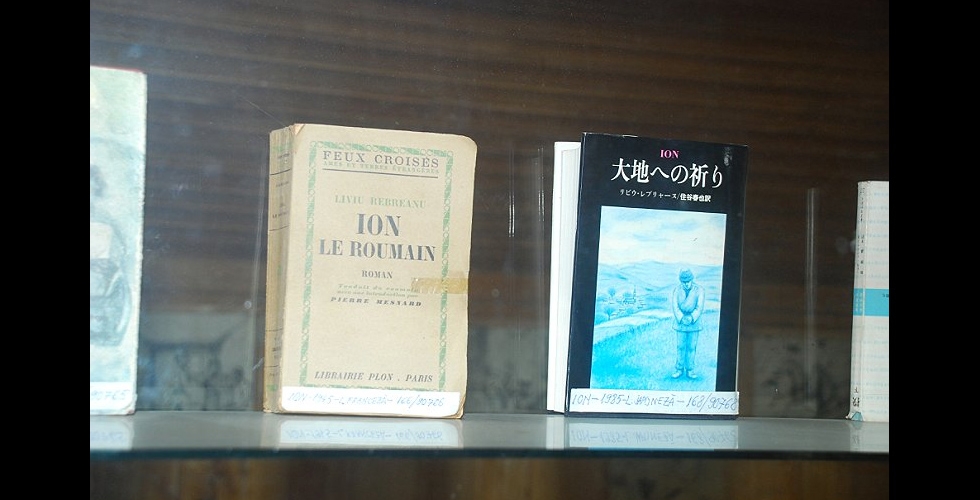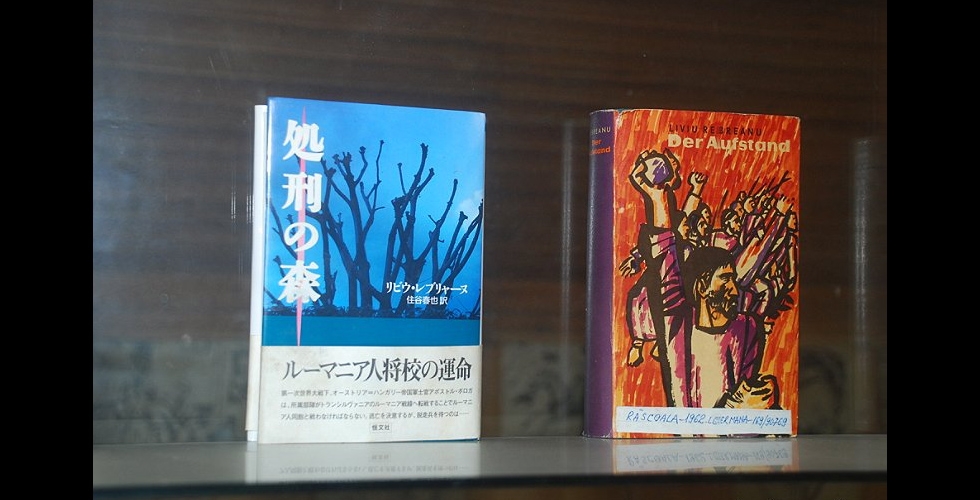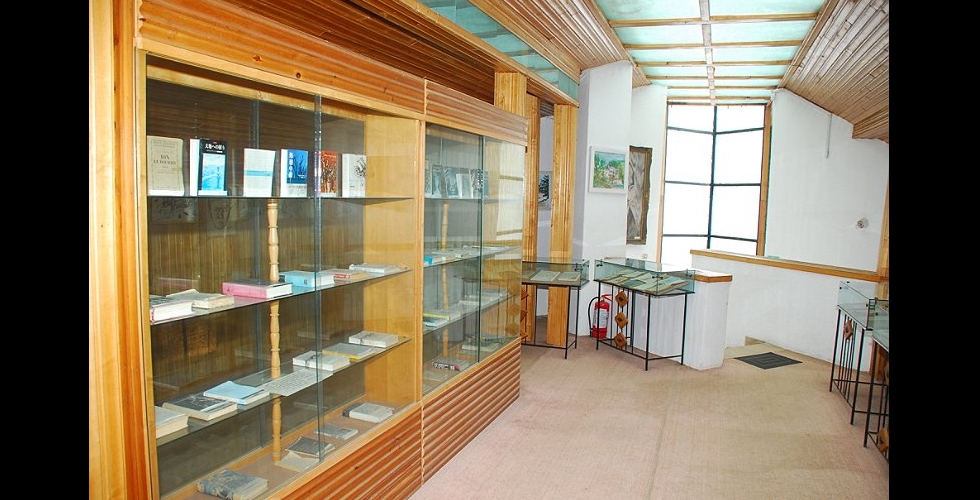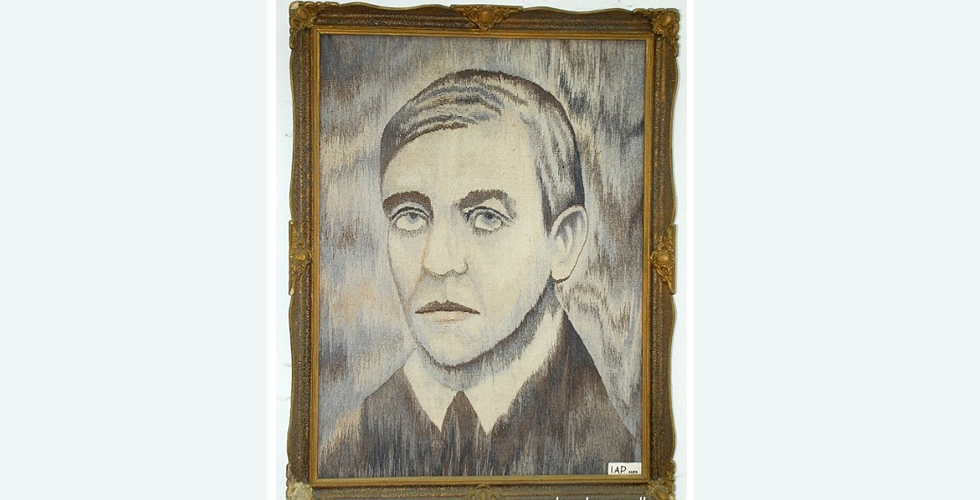Intr-un muzeu daca dorim sa venim in intampinarea dorintelor beneficiarilor de diverse tipuri este important sa tine
Memorial Museum "Liviu Rebreanu"
You are here
Memorial Museum "Liviu Rebreanu"
Among the most important personalities of the county Bistriţa-Năsăud a special place is reserved to Liviu Rebreanu (1885-1944), the creator of the modern Romanian novel.
As we know, the writer saw the daylight in the village Târlişua, where he only spent a few months.
His father, the school-teacher Vasile Rebreanu was forced to wander through several villages in the region until he managed to find a fixed job, first in Maieru and then in Prislop, a village about 3 km from Nasaud. The novelist spent his childhood in Maieru and part of his youth in Prislop.
It was obvious that in view of honoring his memory, to have in this region a museum in which there could be exhibited aspects of his life and opera. The idea of setting up the Memorial Museum Liviu Rebreanu appeared in 1956 within an initiative group made up of professor Sever Ursa – young graduate of the University in Cluj, professors Alexandru Husar and Gavril Scridon, professor Ioan Nichifor Someşan – director of the museum in Nasaud, Septimiu Pop – professor at the „George Coşbuc” High School in Nasaud, the deacon from Prislop – Vasile Tabără.
Prislop was chosen as here, Liviu Rebreanu spent the years decisive for his future literary career, and then, the village and its inhabitants are to found in the novel “Ion”, the first novel of the writer. Because the house in Prislop, where the writer’s parent have lived did not exist anymore at that time, there was decided to have another house built, a house to respect the original blueprint and in which there was to open the museum.
As such, at the margin of the village, to Nasaud, there was built a house, identical to the one belonging to the Rebreanu family. At the inauguration ceremony, that took place on June 2nd 1957, there were present, among others, besides the thousands of admirers of the novelist, the wife of the writer, Fany Rebreanu, his sisters and also his daughter, Florica Puia Rebreanu.
On the marble plate on the northern façade of the house one can read: „IN THIS HOUSE, RE-BUILT IN 1957 BY THE INHABITANTS OF PRISLOP-NĂSĂUD, THERE LIVED, IN THE MIDDLE OF HIS CHARACTERS IN THE NOVEL “ION”, THE GREAT WRITER LIVIU REBREANU”.
On the occasion of museum’s inauguration, there was unshrouded the bust of the novelist, opera of the professor Ioan Nichifor Someşan.
In 1963, the first bust was replaced with a new one, made of bronze by the sculptor Romulus Ladea. From that day on, the village Prislop will bear the name of Liviu Rebreanu. The interior arrangement of the museum was made at the beginning with support of the writer’s widow and sisters, who showed a deep interest for the conservation of the memory of Liviu Rebreanu, contributing with very important documents and objects.
Later, in the 80s, near the house-museum there was built a new edifice with conference room, office of the curator, photo-studio, storage room but also room for a permanent book exhibition that comprised the entire work of Liviu Rebreanu, including numerous translations in more than 20 foreign languages.
The effort of the visitor travelling tens or hundreds of kilometers, thinking of visiting this museum, is fully rewarded. Gathered and properly valued, the exponents illustrate the huge personality of the writer.
The museum contributes to the spreading of the life and work of the writer among the public, especially of the youth, facilitate the understanding of his creation. Here, there are sheltered numerous objects referring to the life and literary work of Liviu Rebreanu.
There are exhibited personal objects and photographs presenting the novelist from adolescence up to his last year of life (1944).
Here, there stands his working table, where the writer spent the most important moments in his life, together with his writing objects and tobacco and coffee set.
Extremely precious are the exponents belonging to other members of the family of the school-teacher Vasile Rebreanu (present in the novel „Ion”, under the name Herdelea): photographs of Liviu Rebreanu’s parents, brothers and sisters and furniture.
Among the numerous objects in the museum, of great interest are the ones connected to the work of the writer. There are exhibited the shirt, hat and belt belonging to Ion from the novel with the same title, together with the dress, beads, head-dress and rock of Ana.
In connection to the novel „Pădurea spânzuraţilor” (Forest of Gallows), one can see: the cap born by Emil (writer’s brother), the character of Apostol Bologa, photographs, letters and also the sentence to death in original. There are also exponents connected to the novel „Răscoala” (The Mutiny), as there is to see a sketch drawn out by Rebreanu, about the mutiny from 1907, with annotations concerning its development.
In the three rooms of the museum, there set foot personalities of the Romanian culture and literature, such as: George Călinescu, Tudor Vianu, Mircea Zaciu, Vasile Netea, Niculae Gheran (the editor of Rebreanu’s work), Grigore Vieru etc.
Among the ones crossing the threshold of the house in Prislop, one can count foreign visitors. In the pages of the “Golden Book”, one can find signatures of tourists from Belgium, Greece, Germany, France, USA, Japan, Poland, Jordan, Yemen, Tanzania, Ciad, India, Vietnam etc.
A notable presence is the one of the Japanese professor Sumiya Haruia, who translated into Japanese the novels “Ion” and “Forest of Gallows”. During its more than 50 years of existence, the museum has been visited by more than three million visitors.
Printre personalităţile de marcă ale judeţului Bistriţa-Năsăud se numără şi Liviu Rebreanu (1885-1944), ctitorul romanului românesc modern.
După cum se ştie, scriitorul a văzut lumina zilei în localitatea Târlişua, unde n-a petrecut însă decât câteva luni.
Tatăl său, învăţătorul Vasile Rebreanu a fost nevoit să colinde mai multe sate din regiune până şi-a câştigat un post mai stabil, mai întâi în Maieru, şi apoi în Prislop, aşezare situată la aproximativ 3 km depărtare de Năsăud. Astfel, la Maieru şi-a petrecut romancierul copilăria, iar la Prislop o parte din anii tinereţii.
Era normal ca în vederea cinstirii memoriei sale să se creeze pe aceste meleaguri o instituţie muzeistică în care aspecte din viaţa şi opera lui să poată fi cunoscute şi vizualizate. Ideea înfiinţării Muzeului memorial Liviu Rebreanu s-a născut în anul 1956 şi a aparţinut unui grup de iniţiativă de pe lângă Muzeul Grăniceresc Năsăudean: profesorul Sever Ursa, tânăr absolvent al Universităţii din Cluj, profesorii universitari Alexandru Husar şi Gavril Scridon, profesorul Ioan Nichifor Someşan, director al muzeului din Năsăud, Septimiu Pop – profesor la Liceul „George Coşbuc”, diacul din Prislop – Vasile Tabără.
S-a ales Prislopul întrucât aici şi-a petrecut Liviu Rebreanu anii care au fost decisivi pentru cariera lui literară, iar apoi, satul şi oamenii de aici se regăseau în mare parte în lucrarea „Ion”, cel dintâi roman al scriitorului. Deoarece casa din Prislop în care au locuit părinţii scriitorului nu mai exista la acea vreme, s-a hotărât construirea unei alte case care să respecte planul celei vechi, în care urma să fie găzduit muzeul.
Ca urmare, la marginea dinspre Năsăud a satului, s-a ridicat o casă identică cu aceea care a aparţinut familiei Rebreanu. La festivitatea de inaugurare, ce a avut loc la 2 iunie 1957, au fost prezenţi, printre alţii, alături de miile de admiratori ai prozatorului, soţia scriitorului, Fany Rebreanu, surorile acestuia, dar şi fiica, Florica Puia Rebreanu.
Pe placa de marmură, aşezată pe faţada nordică a casei, se consemnează: „ÎN ACEASTĂ CASĂ RECLĂDITĂ ÎN ANUL 1957 PRIN MUNCA LOCUITORILOR DIN PRISLOP-NĂSĂUD, A TRĂIT ÎN MIJLOCUL EROILOR SĂI DIN ROMANUL ION, MARELE SCRIITOR LIVIU REBREANU”.
Cu ocazia inaugurării muzeului a avut loc şi dezvelirea bustului dedicat romancierului, opera profesorului Ioan Nichifor Someşan.
În anul 1963, primul bust a fost înlocuit cu unul nou, realizat în bronz de sculptorul Romulus Ladea. Din acea zi şi satul Prislop va purta numele lui Liviu Rebreanu. Amenajarea interioară a muzeului a fost posibilă iniţial cu sprijinul văduvei scriitorului şi al surorilor lui, care au arătat un adânc interes pentru conservarea memoriei lui Liviu Rebreanu, contribuind cu documente şi obiecte de cea mai mare importanţă.
Mai târziu, prin anii optzeci, lângă casa-muzeu a fost ridicată un nou edificiu, prevăzut sală de conferinţe, biroul muzeografului, cabinet foto, sală pentru depozitare, dar şi un spaţiu pentru o expoziţie permanentă de carte, care cuprinde întreaga operă a lui Liviu Rebreanu, inclusiv numeroase traduceri în peste douăzeci de limbi străine.
Efortul vizitatorului care străbate zeci sau sute de kilometri, cu gândul de a vizita şi acest muzeu, este pe deplin răsplătit. Adunate cu sârguinţă şi puse în valoare cu pricepere, exponatele ilustrează uriaşa personalitate a marelui scriitor.
Muzeul contribuie la popularizarea vieţii şi operei scriitorului în rândul publicului, al tineretului în special, facilitează înţelegerea creaţiei rebreniene. Aici se păstrează diverse lucruri care fac referire la viaţa şi creaţia literară a lui Liviu Rebreanu.
Sunt expuse obiecte personale şi fotografii înfăţişând pe romancier începând cu adolescenţa şi până în ultimul său an de viaţă (1944).
Tot aici poate fi văzută masa de lucru, la care şi-a petrecut scriitorul momentele cele mai importante din viaţă, alături de obiectele lui de scris şi nelipsitul serviciu de tutun şi cafea.
Deosebit de preţioase sunt exponatele care au aparţinut şi altor membrii ai familiei dascălului Vasile Rebreanu (întâlnită şi în romanul „Ion”, sub numele Herdelea): fotografii ale părinţilor lui Liviu Rebreanu, ale surorilor şi fraţilor, obiecte şi piese de mobilier avute în folosinţă.
Din numeroasele obiecte aflate în muzeu, de mare interes se bucură şi cele referitoare la operele scriitorului. Astfel, sunt expuse cămaşa, pălăria şi cureaua care au aparţinut lui Ion, din romanul cu acelaşi titlu, alături de zadia, mărgelele, năframa şi furca de tors ale Anei.
În legătură cu romanul „Pădurea spânzuraţilor”, se pot vedea: boneta purtată de Emil (fratele scriitorului), prototipul lui Apostol Bologa, fotografii, scrisori şi, de asemenea, sentinţa de condamnare la moarte în original. Nu lipsesc nici exponatele referitoare la romanul „Răscoala”, păstrându-se o schiţă întocmită de Rebreanu cu propagarea mişcării din 1907, cu adnotări asupra desfăşurării ei.
În cele trei încăperi ale muzeului au intrat, de-a lungul timpului, personalităţi de marcă ale culturii şi literaturii române: George Călinescu, Tudor Vianu, Mircea Zaciu, Vasile Netea, Niculae Gheran (editorul operei Liviu Rebreanu), Grigore Vieru etc.
Printre cei care au călcat pragul casei din Prislop se numără şi mulţi vizitatori străini. În paginile „Cărţii de aur” a instituţiei pot fi întâlnite semnăturile unor turişti din Belgia, Grecia, Germania, Franţa, S.U.A., Japonia, Polonia, Iordania, Yemen, Tanzania, Ciad, India, Vietnam etc.
O prezenţă notabilă este cea a profesorului nipon Sumiya Haruia, care a tradus în limba japoneză romanele „Ion” şi „Pădurea spânzuraţilor”. În cei peste cincizeci de ani de când fiinţează muzeul a fost vizitat de peste trei milioane de persoane.

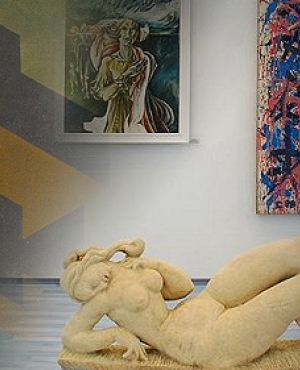
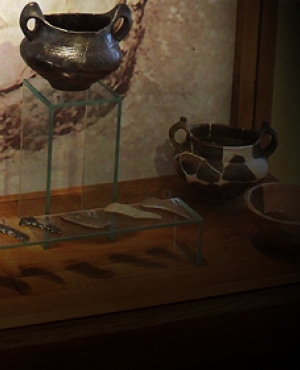
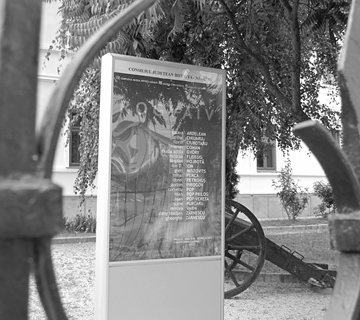 Clipuri Video
Clipuri Video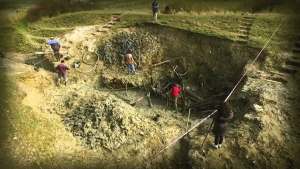
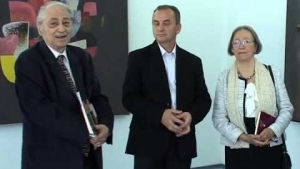
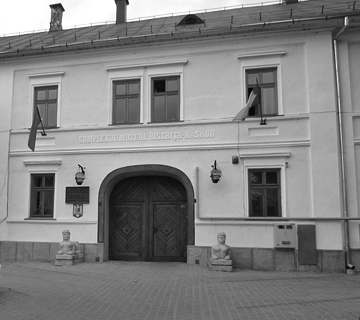 Complexul Muzeal Bistriţa-Năsăud
Complexul Muzeal Bistriţa-Năsăud